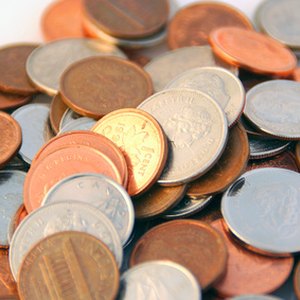
A savings account is an excellent vehicle for building an emergency fund, saving up for a large purchase and other short-term goals. As long as the bank you choose is FDIC-insured, the money you put into a savings account is perfectly safe, even if the bank runs into trouble. In addition, the bank pays you interest, or dividends, helping you maximize your savings even more.
Interest Paid
When you open a savings account, you can earn interest on the money you put aside, all without putting that money at risk. Banks compete with one another to offer the best rates, and shopping around is the best way to get the most interest for your money. After you open your account, you will receive a statement each month, either through traditional mail or email. This statement shows the amount of interest you earned, making it easy to keep track of the dividends paid by your account.
Changing Rates
The interest rate on a savings account is variable, and it is subject to change on a daily basis. If you have a savings account with a good interest rate, monitor that rate carefully. If the rate drops substantially you might want to start shopping around for a bank that offers more for your money. The wide availability of electronic transfers makes it easy to switch from one bank to another when rates change.
Reportable Income
Unless you hold your savings account as part of a tax-deferred investment like a 401k or IRA, you are responsible for paying taxes on the dividends you earn in your savings account. The bank should send you a 1099 form near the beginning of the year, and you need to include this income when you prepare your taxes. Wait until you have received all your 1099 forms before you file your taxes for the prior year.
Estimating Taxes
If you have only a small amount of money in your savings account, the amount of interest income you receive probably will not impact your tax bill too much. But if you have thousands, or tens of thousands, of dollars in the bank, the interest you receive could increase your tax bill. If you do have a large savings account that pays good dividends, do some preliminary tax planning. Gather as much information as you can about your yearly income, including pay stubs that show your year-to-date earnings and bank statements that show your year-to-date interest income. Then enter those numbers into a tax preparation software program and see how the interest you have earned impacts your tax liability. Knowing how much you might owe allows you to put money aside to pay those taxes.
References
Writer Bio
Based in Pennsylvania, Bonnie Conrad has been working as a professional freelance writer since 2003. Her work can be seen on Credit Factor, Constant Content and a number of other websites. Conrad also works full-time as a computer technician and loves to write about a number of technician topics. She studied computer technology and business administration at Harrisburg Area Community College.

